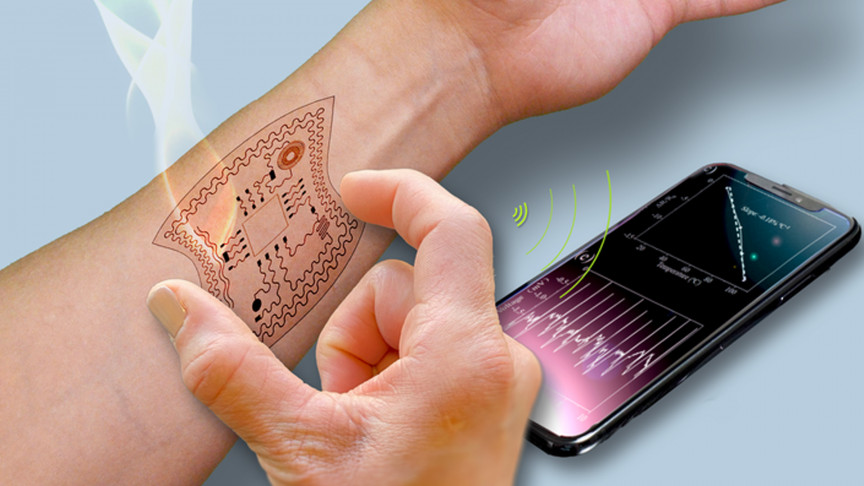Researchers at the Penn State Department of Engineering of Engineering Science and Mechanics have developed a novel way of harvesting energy from radio waves to power wearable devices, according to a press release by the university.
“We are utilizing the energy that already surrounds us — radio waves are everywhere, all the time,” lead author Huanyu “Larry” Cheng said. He also added “If we don’t use this energy found in the ambient environment, it is simply wasted. We can harvest this energy and rectify it into power.”
For example, every time we call someone or when we connect to a website, electromagnetic waves spread out unless they are blocked by an object. Since in a given second, billions of people are making phone calls, we are bombarded with electromagnetic waves everywhere we go. These waves, although possessing very little power, can be sources of energy.
The ‘Rectenna’
The researchers have developed a stretchable wideband dipole antenna system without affecting the antenna’s frequency response. The system, which consists of two stretchable metal antennas integrated onto conductive graphene material with a metal coating, can wirelessly transmit data collected from health-monitoring sensors. Since these sensors consume very little power, said electromagnetic waves could be used to power them.
Even when stretched, bent, or twisted, the special design of the system allows it to retain its frequency functions. It is then connected to a stretchable rectifying circuit. This creates a rectified antenna, “rectenna”, capable of converting energy from electromagnetic waves into electricity.
The wearable devices’ sensing modules that track temperature, hydration, and pulse oxygen level can be powered with this energy. Cheng stated that while less energy is produced than other sources, the system has a significant advantage since it can generate power continuously. Moreover, the press release explains that the said electricity can be used to power wireless devices or to charge energy storage devices.
The researchers now want to combine this technology with the novel wireless transmissible data device.
“Our next steps will be exploring miniaturized versions of these circuits and working on developing the stretchability of the rectifier,” Cheng said. “This is a platform where we can easily combine and apply this technology with other modules that we have created in the past. It is easily extended or adapted for other applications, and we plan to explore those opportunities.”


